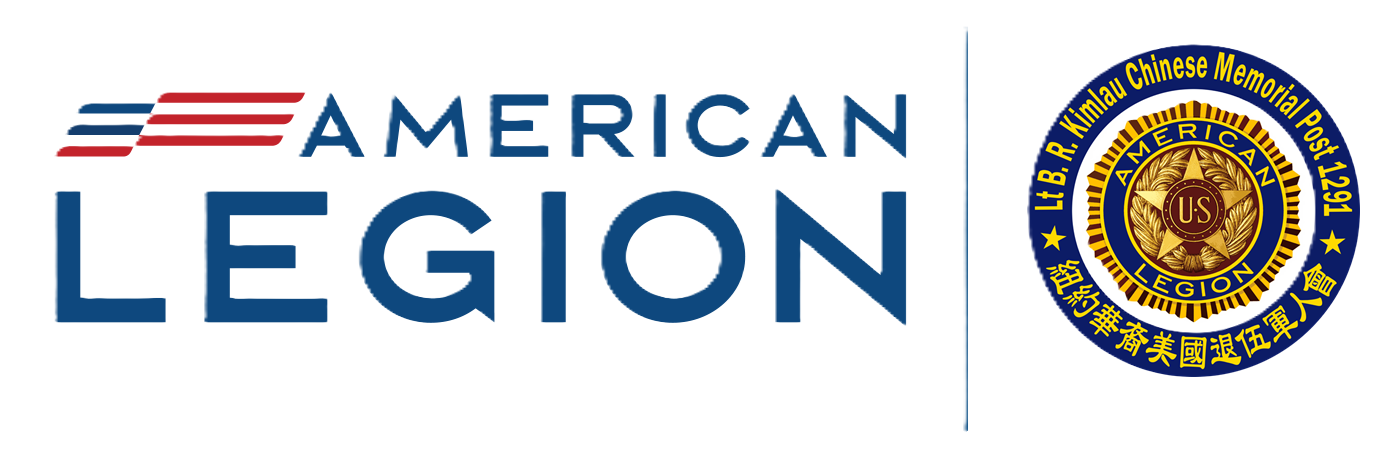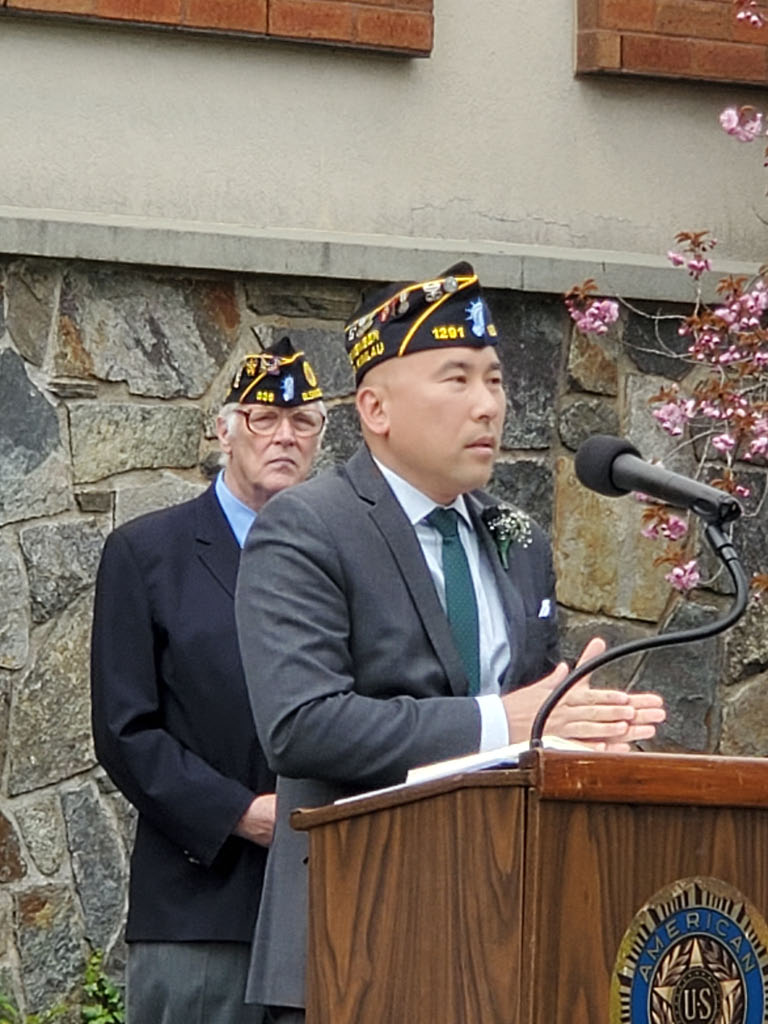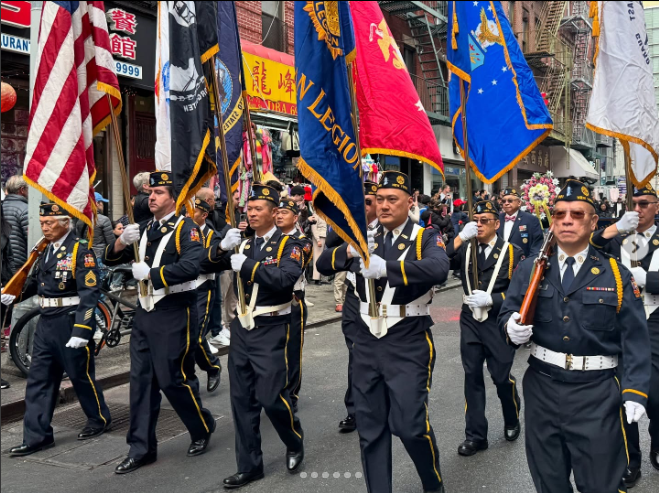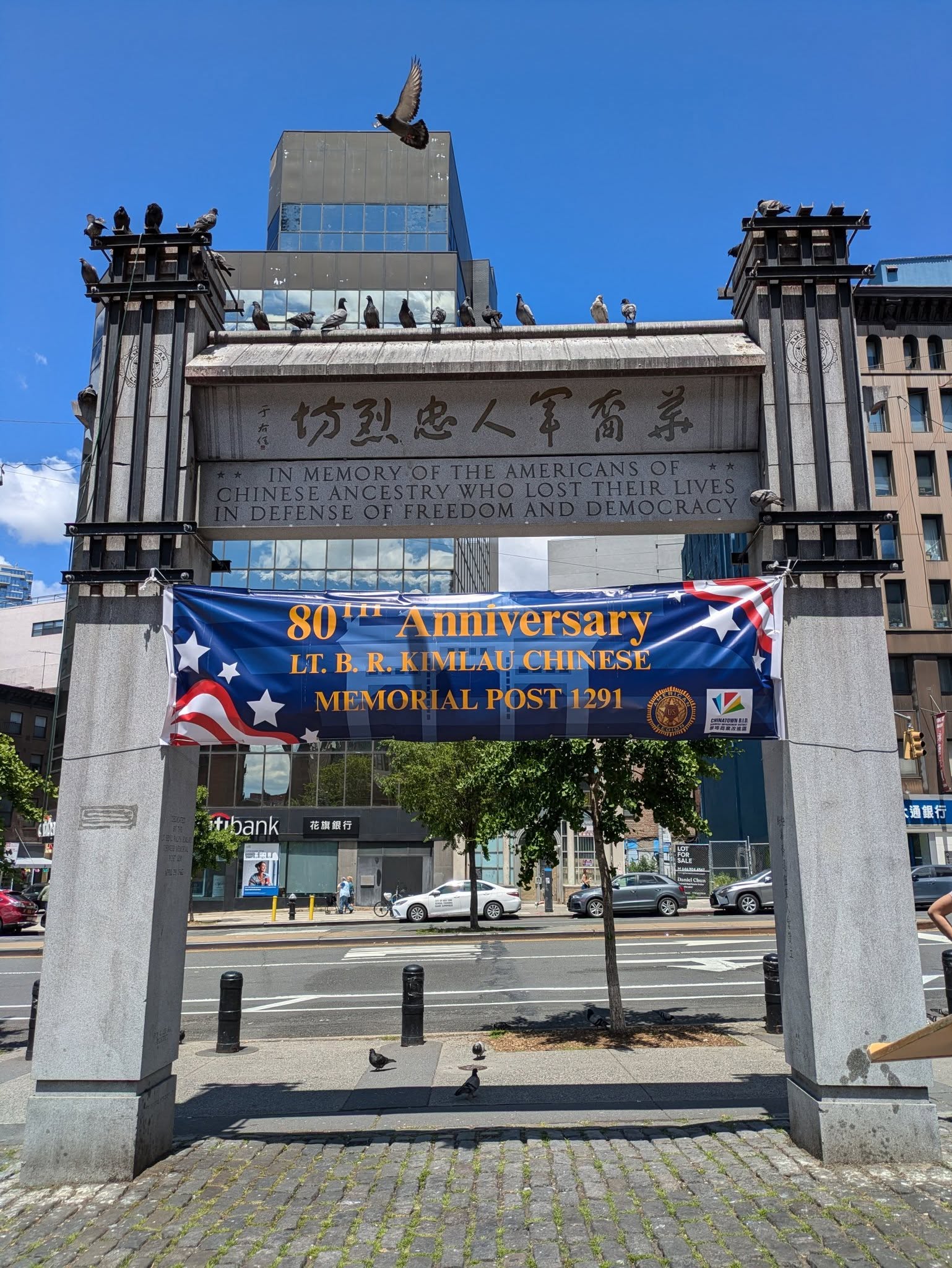HOW AN IDEA BECAME REALITY
In the beginning, during the latter part of 1944.George Ming Lee, a postal employee and member of the American Legion post, met with George Mar Lee, also a postal employee and member of another American Legion post, and with Frank Gee, who ran the Chinatown Fair enterprise, to discuss the formation of a Chinese American Legion post to serve the American veterans of Chinese descent. They liked the idea, agreed to meet again and to bring their friends with them.
A second caucus was held on a Sunday over a tea party at Wah Hong Restaurant, Doyer Street, Chinatown. Besides the original three, Louie Gar-lap, Wai Tun-on, Chin Tom-tung and Chu Fee also attended. The seven of them showed much interest and enthusiasm. They scheduled another meeting the following week at the same time and place.
Two more veterans, Louie Hoy and Cheung Lu came to the third caucus. There were still too few people to start an organization. They decided to meet the week after, determined to bring in as many veterans as they possibly could. Five more came to this meeting including Tom Tek-jun, Loo Shing, Lam Yu, Kao Lap and Harry D. Kellog, who was the only non-Chinese among them, for a total of 14 people.
Now they felt there were enough people to form a committee to start organizing an American Legion post. George Mar Lee was elected as temporary chairman, George Ming Lee as Vice-chairman, Wai Tun as treasurer, Chin Tom-tung and Louie Gai-lap as secretaries; Chu Fee as adjutant. For the coordinator, who was to be responsible for keeping everybody informed, Frank Gee was elected because he was there operating the Chinatown Fair, which the group often used as an ideal meeting place.
Frank Gee not only provided his premises for the committee to meet, he also paid for the costs of those tea parties held at the restaurant. His contribution to the formation of the post was unsurpassed by any member. Later, at a fund-raising meeting, all the original members donated a total of $120 for the general operating fund.
The provisional post now had two most important tasks. The first was a membership drive. With the war’s coming to an end, many veterans had returned and resumed their civilian life. When the word was spread, within a month’s time, post membership increased rapidly to over one hundred strong, more than the required number of members for application for an official American Legion post.
Consequently, the post proceeded to undertake the second task: applying for a charter from the National American Legion Headquarters. Honorable discharge certificates were required for authenticity. Most of the members had emigrated from China. They realized that the discharge papers were the most important documents they possessed. They were afraid they might be mishandled or lost, and hesitated to let the post temporarily borrow them.
Lau Sing Kee, a prominent local business man and veteran of WW-I, served as Vice commander at an American Legion Post. He had the respect of the community. He came out to explain the procedures of getting a charter, and personally guaranteed the safe return of everyone’s discharge papers. With his assurance, soon the post collected 104 discharge papers. They were placed in the steel safe at Frank Gee’s Chinatown Fair for safekeeping.
Mr. Lau and members of the post, Chu Fee, Tom Tek-jun and Harry Kellog, together with the help from County Adjutant McGovern, worked throughout the night to prepare the documents and application for the Charter. On June 23, 1945, the National Executive Committee of the American Legion granted the post an official Charter, two months from the beginning of their start-up campaign. Mr. Lau, upon learning the news, hosted a party for all the members at Port Arthur Restaurant to celebrate its success. Our post owes Mr. Lau Sing-kee a debt of gratitude.
Thus AMERICAN LEGION, LT. B.R KIMLAU CHINESE MEMORIAL POST 1291 was created.






